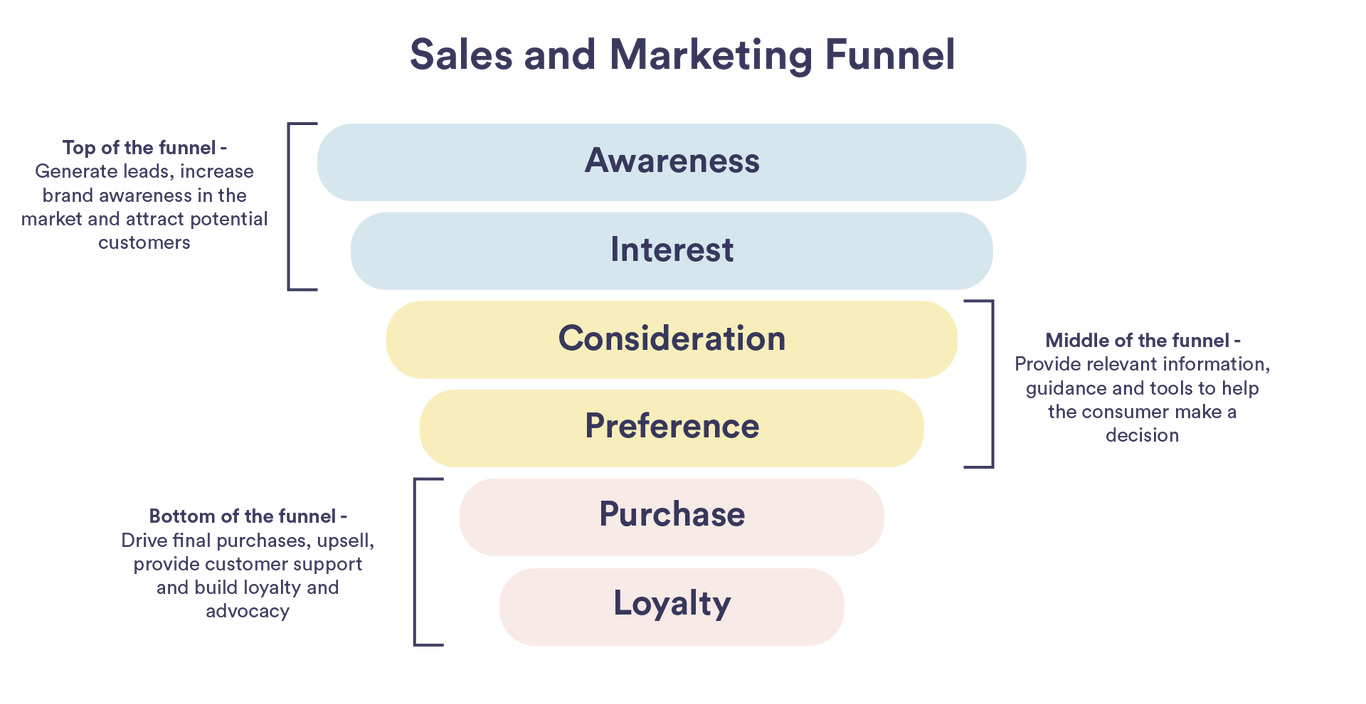Branding metrics are a staple in measuring marketing success. But many marketers now avoid “vanity” metrics in favor of “more meaningful” marketing KPIs – those with a direct impact on sales or ROI. But are vanity metrics really meaningless? We explore their true value – and what you risk losing by leaving them behind.
In marketing, we love our key performance indicators (KPIs) and branding metrics – and the confidence that comes with justifying our work with proven quantitative results – particularly when we can use those results to show strong conversions to sales or good return on investment (ROI).
But many of the metrics presented by social media platforms or analytics tools are centered around engagement – impressions, likes, views, traffic, and time-on-site, for example. Being the easiest to measure, they are also the most commonly used for marketing KPIs, to measure the performance and success of marketing efforts.
Some experts are now warning marketers away from these indicators – what they call “vanity” metrics – arguing that they are not actionable or meaningful. Why? Because they don’t show the direct impact of marketing on sales or pofit.

While this can be true, disregarding or minimizing the value of these KPIs is also a terrible mistake – one that can end with marketers disregarding one of the most important foundations for successful marketing: brand.
Here we take a look at some of these “vanity” metrics and why they are crucial to your business growth and marketing strategy – and really shouldn’t be ignored.
Brand awareness - making a good impression
Brand awareness is a critical element in any successful marketing strategy. Views or impressions are a reflection of how many people you have exposed your brand to – a marketing ‘touch’ with that prospective customer. Provided you’ve done your market segmentation and targeting well and are reaching out to the right market, that touch might be the extra push or familiarity they need to convert at a later stage. Just because a potential buyer isn’t buying or reaching out right now, doesn’t mean they won’t.
By focusing only on marketing KPIs that impact sales and business growth directly, you are essentially only valuing progress at the bottom half of the sales funnel – a funnel that will soon begin running dry, if both ends aren’t being nurtured.

With information at their fingertips, consumers today conduct more independent research than ever before. Several touches are likely to have taken place with a consumer before they even request information, as they will often spend a fair amount of time in their customer journey gathering information, building awareness about your products and services, and comparing your offering to other competitors.
This is particularly important to consider for B2B companies, where the length of the sales pipeline might be months – so seeing an impact on sales in the duration of your campaign may not be realistic. But this doesn’t mean the ad or content isn’t valuable - getting your brand on a potential customer’s radar, or reminding them of your offering, can still be a crucial nurture-point that contributes to sales down the line.

Engaging content and high traffic = opportunity
Some marketers complain that their content, while receiving excellent traffic and engagement metrics such as page views or time on page, isn’t resulting in sales. Databox, for example, shares the case of John Frigo from Best Price Nutrition as an example of ‘vanity metrics you should ignore’:
“This is my number one trafficked page but has never made a sale…” they quote. “I say this is a vanity metric because sure it sounds good to say my blog post gets 80k views per month but unless that page is converting into sales or at the very least getting me some email/SMS or push signups it’s pretty pointless.”
As well as not considering the potential value in terms of brand awareness, a great opportunity has been missed here to learn, gain insights and improve. Outstanding engagement shows that this content is appealing to a certain audience – and a large one. But the fact that this volume isn’t converting to sales could come down to a number of reasons.

By taking a deeper dive, and A/B testing with alternatives, some valuable business insights could be gained, and actioned from to see stronger results. For example:
- Clarifying user behavior and next steps
If the time on the page was also high (showing readers were engaged with the content, not just attracted to the page), then perhaps the call to action (CTA) in the post was not clear, easy to access, or relevant enough? Or maybe the next step (such as a phone call or form) was too demanding?
- Delivering what you’ve promised
If the time on the page was low, perhaps your content isn’t compelling enough? Or your marketing ads / CTAs leading to the page were misleading? These would result in high bounce rates as people quickly leave when they see they can’t get what they’re looking for.
- Understanding the customer journey
What does the customer journey look like for the targeted segment? Perhaps they need more time or nurturing through follow-ups and more relevant content.
- Evaluating your segment
Was the content not relevant for the target market, and it’s attracting the wrong audience? Or, if the content is relevant, this could potentially reflect a new potential market segment (and big business opportunity) that the current offering simply isn’t well-positioned for? It’s always worth taking a deeper look!
By using them as an opportunity to learn and inform future decisions, these seemingly pointless metrics can be converted into a powerful tool for delivering stronger results from your marketing efforts.

As Daniel Hochuli, Head of Content Solutions at LinkedIn puts in his insightful article for Content Marketing Institute:
The words “vanity metric” have earned undeserved negative connotations, making it easy for marketers to dismiss their value. I like the term “optimization metrics” because it helps you understand their value. The purpose of a vanity/optimization metric is to help optimize your content for your target audience on a specific channel.
There’s much more to be gained by looking at a high level of engagement as a chance to learn more about your audience and optimize your marketing or positioning, rather than as a failure to sell. But this isn’t the only benefit from brand-focused KPIs.
SEO and brand familiarity – a perfect match
Search engine optimization (SEO) is one of the most popular top-of-the-funnel marketing metrics – it’s easy to show success, and the importance and benefits are clear. In fact, recent research shows that nearly 68% of clicks in Google searches go to the first five organic results.
But brand awareness also has a big role to play. Getting your pages to rank is one thing, but gaining those precious clicks is quite another. Familiarity with your brand has always made a big difference, but a recent study from Deloitte showed that the insecurity and anxiety brought about by the COVID-19 pandemic has made consumers even more likely to choose the comfort and familiarity or brands they know and trust, rather than taking risks on unknown or novel brands. So, if you’re throwing money at SEO optimization and want your rankings to convert to clicks, building brand awareness and trust are a good place to start.

Thanks to the preferences of the all-powerful Google algorithm, pages, and sites whose content is shared and linked to more will rank better. So, building a brand isn’t just about familiarity. Great content that your audience engages with and links to (as the blog post referred to in the previous example might be) can also help improve your SEO results.
Top of the funnel brand metrics
Every brand is different, so there is no hard-and-fast rule on what metrics you should use for your marketing KPIs - they should be carefully considered and selected based on your business and marketing goals and revisited and reviewed over time.

In addition to your sales, conversion, or revenue-based KPIs, here are some prime examples of top-of-the-funnel brand metrics - often considered “vanity metrics” - which could be used as KPIs, and examples of the insights they could offer.
- New website sessions and traffic
By looking at patterns over time in how many new visitors your website is receiving, you can consider if your top-of-the-funnel marketing activities are successfully driving more visitors to your website - both directly and indirectly. Spikes in activity can also be looked into, to see if there is a particular campaign or event driving interest (and how this can be taken advantage of).
- Pageviews
Looking at the number of visits to certain pages, you can get a great deal of information as to what content is appealing to your market segments - what are people looking for? What topics or products are they the most interested in? These can be a great guiding force for your content and even business strategies.
- Average time on page
In addition to pageviews mentioned above, time on page can show how engaged the readers are with the content. More valuable for long-form, informative content, this should be considered in the context of user behavior, together with page bounce rates and their next moves. With product pages or navigation pages, low time on page might be a good thing - if the user is finding what they need quickly and moving on to purchase or read more.
- Social media engagement
The number of likes, comments, and shares on posts can be used to inform your content strategy, seeing which content your target audiences are responding better to and as a basis for testing to improve content types and targets. Remember, more engagement often results in your content being pushed further on the platform, giving more brand exposure.
- Number of social media followers
Similar to website sessions, this should be looked at as a limited reflection of growing brand awareness and value. Organic growth could be reviewed occasionally over time, looking for patterns or higher growth periods and cross-checked against marketing or business activities and events, to determine what gave the strongest growth. It should not be used as a measure of success in comparison with other companies, as followers can be purchased or gained through other inorganic means.
“Vanity” branding metrics - no quick wins, but valuable ones
While you may have to dig a little deeper to see the full potential of these upper-funnel metrics and to benefit from their insights, it doesn’t mean they aren’t just as valuable. These “vanity” metrics are still important KPIs – maybe not for transactional business goals (unless you track them through the whole customer journey) – but at the very least as a helpful reminder to always keep brand awareness and optimized content integrated into your marketing strategy.

To quote more wise words from Daniel Hochuli: “Don’t look for the quick-and-dirty win with vanity metrics; it’s not there.” But if you look a little closer, these marketing KPIs may just help solve your problems – and reveal a world of new marketing opportunities you didn’t know was there.
